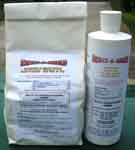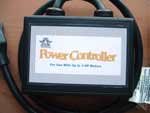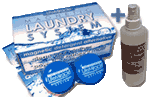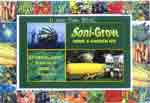 Suppression of Energy Technologies
Suppression of Energy Technologies
Article by Christopher Walter
 Time magazine August 17 July 1995 (p.46) are rounding up the future technologies that (may eventually) improve the world as we know it
Time magazine August 17 July 1995 (p.46) are rounding up the future technologies that (may eventually) improve the world as we know it
Time Magazine correctly points out
That a change in the usage of energy would have a massive impact, but then promise "The first company to design an affordable car that doesn't foul the atmosphere will race past its competitors."
Not only are they totally wrong, but they're probably lying. The simple fact is the technology has been with us for most of this past century, it's just that it would free us from the enslavement by oil companies, and government, to allow us to utilize it.
My story began late one night driving home listening to talk back radio, when somebody piped up that they'd been working on a solar-powered car out at the local airport, and it was ready to go and as cheap and as safe as an average family car - except that you would only need about five dollars worth of fuel per year to get it started. The startled D. J. then asked when were we likely to see it in the market place, and the engineer cooly replied "probably never, I'd say the oil companies will buy us out in a flash." I nearly crashed my car- what on earth was going on here? The next day I rang the airport to find out who was doing the testing only to find out from an assertive voice, "there are no automobiles being tested here and there never has been." Fine, the dead end proved to be the spark of determination to send me on my investigative way.
The next encounter was about a year later involving a friend who knew a guy who invented a lawn mower that ran on water. Skeptical but excited, I said I wanted to meet the man and she came back a few days later quite upset to find he'd recently opened his front door to a shot gun blast in the face, the dead inventor had been solidly drinking for the past six months since he came home with a million or so dollars and word to the family that he didn't want to discuss his engines again. O.K. - that one seemed weird, maybe he was some dodgy businessman or something. I still needed more.
More came in the form of an article in the Melbourne Age (13/7/93 p.5)
Introducing the "ozone safe induction" system, a little black box that was added to your engine that cut fuel usage by up to two-thirds with a corresponding reduction in pollution.
Oz Smart Technologies was the name of the firm, and Mike Holland the inventor that I talked to about his supposed breakthrough. "Yeah, the U.S. military just flew out some Generals and stuff and they want to buy it, and Nissan just offered me five million dollars but I want to develop it in Australia." Yeah but, does it work? Apparently it did, the E.P.A. told him off the record, that it was the best design of its kind they'd ever seen, along with a bunch of techies from Swinburne University who'd done all the testing, but the media continued to consider the device a bit of a hoax and the company simply does not exist anymore - yep they just disappeared (again).
My research today tells me that Mike Holland's invention was probably of the "Improved fuel efficiency" variety simply burning fuel in a more efficient manner, nothing terribly difficult. Other well known developments are of the "car running on water" kind, usually involving electrical current running through the water to extract and then burn the hydrogen. Some of the more interesting involve the use of magnets, sometimes tuned to exact frequencies that take energy from the ambient atmosphere.
Since meeting Mike Holland I have managed to collect quite a list of energy inventions that have somehow avoided being utilized in the market place. You may not believe they all work, but it would be very difficult to claim that all of them are fabrications, still the evidence is here - you decide yourself.
Hydrogen Power
Yul Brown - from Sydney Australia developed a method of extracting hydrogen from water in 1978 and utilizing it as a car fuel and fuel for cutting steel and brazing. After much publicity (see The Bulletin (Aust) Aug 22, 1989) he had managed to raise over 2 million dollars.... UCSA offers this technology for cutting and brazing steel.
See Stanley Meyer's Water Powered Car: It was estimated that Stanley's water powered car could go from California to New York using about 28 gallons of Water. Stanly Meyer was conscripted to work for the Pentagon and then was murdered by poison after hoisting a toast to success powering Army Tanks using the hydrogen in water.
Click to see Stanley Meyer's Water Powered Car
Francisco Pacheco - an inventor from Bolivia created the "Pacheco Bi-Polar Auto electric Hydrogen Generator" (US PAT #5,089,107) which separates hydrogen from seawater. He has built successful prototypes that have fueled a car, a motorcycle, a lawn mower, a torch, a boat, and most recently in 1990 he energized an entire home in West Milford. After many conferences (including U.N.) and public exhibitions proving the inventions worth, the wider community is still unable to utilize this technology.
Edward Estevel - from Spain developed a classic 'water to auto engine' system in the late 1960's extracting the hydrogen out of water to use as fuel. This system was highly heralded, then sank among other such 'high hope' hydrogen systems amid rumors of foul play.
Sam Leach - of Los Angeles developed a revolutionary hydrogen extraction process during the mid seventies. The unit easily extracted free hydrogen from water and was small enough to fit under the hood of automobiles. In 1976 two independent labs in LA tested this generator with perfect results. Mr. M.J. Mirkin who began the Budget car rental system purchased the rights to the device from the inventor who was said to be very concerned about his personal security.
Rodger Billings - of Provo, Utah headed a group of inventors that developed a system converting ordinary cars to run on Hydrogen. Instead of using heavy hydrogen tanks, he used metal alloys called Hydrides, to store vast amounts of hydrogen. When hot exhaust gases passed through these Hydride containers it released the gas to burn in the standard engines. Billings estimated the conversion would cost around US$500 and greatly improve fuel consumption.
Archie Blue - an inventor from Christchurch, New Zealand developed a car that runs purely on water by the extraction of hydrogen. An alleged offer of 500 million dollars from "Arab interests" was not enough to convince him to sell but never-the-less he has been unable to take his engine to the market place.
Electric Engines
Wayne Henthron - from Los Angeles built an "Electrometric Auto" in 1976 that managed to regenerate its own electricity. In normal stop and go driving it gave several hundred miles of service between recharges. The system worked by the wiring of the batteries to act as capacitors once the car was moving along with four standard auto alternators acting to keep the batteries charged. With little official interest in his system the inventor resolved to make the car available to the public to do so, is now involved with the World Federation of Science and Engineering - 15532 Computer Lane, Huntington Beach, CA, 92649.Joseph R. Zubris - developed in 1969 an electric car circuit design (US PAT #3,809,978) that he estimated cost him $100 a year to operate. Using an old ten horse electric truck motor, he worked out a unique system to get peak performance from his old 1961 Mercury engine that he ran from this power plant. The device actually cut energy drain on electric car starting by 75%, and by weakening excitation after getting started, produced a 100% mileage gain over conventional electric motors. The inventor was shocked to find the lack of reaction from larger business interests, and so in the early seventies began selling licenses to interested smaller concerns for $500. Last known address was Zubris Electrical Company, 1320 Dorchester Ave, Boston, Ma, 02122.
Richard Diggs - developed at an inventors workshop (I.W. international) his "Liquid Electricity Engine" that he believed could power a large truck for 25,000 miles from a single portable unit of his electrical fuel. Liquid electricity violated a number of the well known physical laws that the inventor pointed out. The inventor was also aware of the profound impact the invention could have upon the world's economy - if it could be developed.
B. Von Platen - a 65 year old Swedish inventor made a major breakthrough in the field of Thermo-electric engines with his "Hot and Cold Engine" - based on the fact that wires of different metals produce electricity if they are joined and heated, the inventors secret breakthrough is said to give more than 30% more efficiency than regular motors, and with a radioactive isotope for power (hmmm?!) it could be completely free from oil.
Volvo of Sweden bought the rights to this in 1975.
Steam Engines
Oliver Yunick - developed a super efficient steam engine in 1970 (Pop.Sci. Dec.1970) able to compete admirably with combustion engines. DuPont Laboratories - built one of the most advanced steam engines in late 1971 using a recyclable fluid of the freon family. It is assumed to contain no need for an external condenser, valves, or tubes. (Pop.Sci.Jan 1972)William Bolon - from Rialto, California, developed an unusual steam engine design in 1971, that was said to get up to 50 miles to the gallon. The engine used only 17 moving parts and weighed less than 50 pounds and eliminated the usual transmission and drive train in an automatic. After much publicity, the inventors factory was fire bombed with damages totaling $600,000 . Letters to the Whitehouse were ignored so the inventor finally gave up and let Indonesian interests have the design.
Air Power
Roy J. Meyers - from LA built an air powered car in 1931. (air has been used for years to power localized underground mine engines) Myers, an engineer, built a 114lb, 6 cylinder radial air engine that produced over 180 HP. Newspaper articles at the time reported that the vehicle could cruise several hundred miles at low speeds.
Vittorio Sorgato - of Milan, Italy also created a very impressive air powered vehicle in the 70's using compressed air stored as a liquid. After a great deal of initial interest from Italian sources his invention is now all but forgotten.
Robert Alexander - from Montebello, Ca. spent 45 days and around $500 to put together a car (US PAT #3913004) based on a small 7/8ths 12 v-motor that provided the initial power. Once going, a hydraulic and air system took over and recharged the small electric energy drain. The inventor and his partner were determined that the auto industry would not bury their "super power" system. To no avail.
Joseph P Troyan - designed an air powered flywheel that could propel an automobile for 2c a mile. Using a principle of "ratio amplification of motion" in a closed system, the Troyan motor (US PAT #040011) was easily attached to electric generators for pollution-free variable power systems.
David McClintock - created his free energy device known as the "McClintock Air Motor" (US PAT #2,982,26100) which is a cross between a diesel engine with three cylinders with a compression ratio of 27 to 1, and a rotary engine with solar and plenary gears. It burns nofuel, but becomes self-running by driving its own air compressor.
Magnetic Energy
John W. Keeley - developed a car in the 1920's using principles similar to Nikola Tesla's, drawing harmonic magnetic energies from the planet itself. The electric car ran from high frequency electricity that was received when he simply broadcast the re-radiated atmospheric energy from a unit on his house roof. GM and the other Detroit oil "powers" offered the inventor 35 million dollars which was turned down when they would not guarantee to market the engine. Henry Ford - later bought and successfully shelved the invention.
John W Kelley died in the later part of the 1890's from pneumonia. We was not able to perfect his vibratory motor for the auto in the 1920's. When he died most of his research notes and motors disappeared never to be seen again. Chris Sproles
Harold Adams - of Lake Isabella, California, worked out a motor thought to be similar to Keeley's. It was demonstrated for many persons, including Naval scientists around the late 1940's before it too "disappeared" from our history.
Dr Keith E. Kenyon - of Van Nuys, California discovered a discrepancy in long accepted laws relating to electric motor magnets, and so built a radically different motor that could theoretically run a car on a very small amount of electrical current. When demonstrated to physicists and engineers in 1976 those present admitted that it worked remarkably well but because it was beyond the 'accepted' laws of physics they chose to ignore it.
Bob Teal - of Madison, Florida was a retired electronics engineer when he invented his Magna-Pulsion Engine which ran by means of six tiny electromagnets and a secret timing device. Requiring no fuel, the engine emitted no gases. It was so simple in design it required very little maintenance and a small motorcycle battery was enough power to get it started. The engine has been met with little else but skepticism.
Lester J. Hendershot - built his Hendershot Generator in the late 1920's largely through trial and error. He wove together a number of flat coils of wire and placed stainless steel rings, sticks of carbon and permanent magnets in various positions as an experiment. To his surprise it actually produced current. The generator raised considerable attention at the time.
Howard Johnson - developed a motor that's power is generated purely by magnetism. It took six years of legal hassles to patent his design (US PAT #4,151,431) - more information is available from the "Permanent Magnet Research Institute" P.O. Box 199, Blacksburg, Virginia 24063. He is currently offering licensing rights. Even a Columbus criminal defense attorney knows that acquiring a patent is a long a drawn out process which can take up to three years to complete. If patent infringement problems arise it can complicate the legal process even further.
Edwin V. Gray - developed in the early seventies an engine that uses no fuel and produces no waste, The engine that runs itself is U.S. Pat #3,890,548.
Petroleum Additives
Guido Franch - from Michigan U.S.A. began demonstrating in the mid seventies his "water-to-gas miracle" a fuel he created by adding to water a small quantity of "conversion powder" which was easily processed from coal. He claimed it could be processed for a few cents per gallon if mass produced. The fuel was tested by Chemists at Havoline Chemical of Michigan and the local University, and both concluded it worked more efficiently than gasoline. Franch continued to put on demonstrations for years but said the auto manufacturers, Government, and private companies just weren't interested in his revolutionary fuel.
Dr Alfred R. Globus - working for United International Research developed a Hydro-fuel mixture around the mid-seventies. The fuel was a mixture of 45% gasoline, 50% or more of water, and small percentages of United's "Hydrelate" which acted as a bonding agent. It was estimated that a hundred million gallons of fuel could be saved per day if this fuel were utilized but alas nobody seemed interested.
John Andrews - a Portuguese chemist who in 1974 developed a fuel additive that enabled ordinary gasoline to be mixed with water reducing fuel costs down to 2c a gallon. After successfully demonstrating the substance, impressed Navy officials when going to negotiate for the formula found the inventor missing and his lab ransacked.
Water and Alcohol Motor - Jean Chambrin, an engineer in Paris ran his private cars on a mixture of denatured alcohol and water. The inventor / mechanical engineer claimed his motor design could be mass produced at a fraction of the cost of present engines. He received nothing but publicity that led him to take great precautions in regard to his personnel security.
Mavrin D. Martin - from the University of Arizona developed in 1977 a "fuel reformer" catalytic reactor that was estimated to double mileage. The device was designed to cut exhaust emissions by mixing water with Hydro-carbon fuels to produce an efficient Hydrogen, Methane, Carbon-Monoxide fuel.
Improving Fuel Efficiency
Edward La Force - from Vermont U.S.A. designed with his brother Robert, a highly efficient engine that burnt all the usually wasted heavier gasoline molecules. The 'Los Angeles Examiner' (Dec. 29, 1974) reported that the cams, timing and so on were altered on stock Detroit engines. These modifications not only eliminated most of the pollution from the motor but by completely burning all the fuel, the mileage was usually doubled. After much publicity the US EPA examined the cars and found the motor designs were not good enough. Few people believed the EPA including a number of Senators who brought up the matter in a Congressional hearing in March 1975. The result was still silence.
Eric Cottell - was one of the pioneers of ultrasonic fuel systems. This involved using sonic transducers to 'vibrate' existing fuels down to much smaller particles, making it burn up to 20% more efficiently. Cottell then went on to discover that super fine S-ionized water could be mixed perfectly with up to 70% oil or gas in these systems, this was followed by much publicity (e.g. Newsweek, June 17,1974) and then, once again - silence.
L. Mills. Beam - had his super-mileage carburetor bought out in the 1920's. In the late 60's he worked out a catalytic vegetable compound that produced the same super mileage results. In principle it was nothing more than a method of using the hot exhaust gases of an engine to vaporize the liquid gas being burned. By rearranging the molecules of gas and diesel, he was able to triple mileage rates, while obtaining better combustion, mileage and emission control. He was refused and rejected by U.S. State and Federal Air Pollution and Environmental Pollution agencies and was finally forced to sell his formula abroad in the mid-seventies just to survive.
John W. Gulley - of Gratz Kentucky managed 115 mpg from his 8 cylinder Buick using a similar vaporizing method as that employed by L.M. Beam. "Detroit interests" bought and suppressed the device in 1950.
SHELL research of London - produced a 'Vapipe' unit in the early seventies that also vaporized the petroleum at around 40 degrees centigrade, and used a sophisticated pressure loss reduction system, but alas was not marketed because it did not meet Federal emission standards.
Russell Bourke - designed an engine in 1932 with only two moving parts. He connected two pistons to a refined "Scotch Yoke" crankshaft and came up with an engine that was superior in most respects to any competitive engine. His design burned any cheap carbon based fuel and delivered great mileage and performance. Article after article was published acclaiming his engine but once again, to no avail. "The Bourke Engine Documentary" is the revealing book the inventor assembled just before his death.
New Fuels
Clayton J. Querles - from Lucerne Valley, California took a 10,000 mile trip across the country in his 1949 Buick on $10 worth of carbide by building a simple carbide generator which worked on the order of a miners lamp. He claimed that half a pound of acetylene pressure was sufficient to keep his car running, but because acetylene was dangerous, he put a safety valve on his generator andran the outlet gas through water to ensure there would be no 'blow back'. The inventor also toyed successfully with methods of fuel vaporization. (see Sun-Telegram 11/2/74.)
Joseph Papp - built the highly regarded Papp engine in the 60's that could run on a 15 cents an hour secret combination of expandable gases. Instead of burning fuel, this engine used electricity to expand the gas in hermetically sealed cylinders. The first prototype was a simple ninety horsepower Volvo engine with upper end modifications. Attaching the Volvo pistons to pistons fitting the sealed cylinders, the engine worked perfectly with an output of three hundred horsepower. The inventor claimed it would cost about twenty ive dollars to charge each cylinder every sixty thousand miles. The idea has gotten nowhere amid accusations of suppression by the media.
Carburetors
G.A. Moore. - one of the most productive inventors of carburetors, he held some 17,000 patents of which 250 were related to the automobile and its carburetion. Industry today relies on his air brakes and fuel injection systems, it continues to completely ignore his systems for reducing pollution, gaining more mileage and improving overall engine efficiency. More info from "The Works of George Arlington Moore" published by the Madison Company. (See US PAT #'s 1,633,791 to 2,123,485 for 17 interesting developments.)
Joseph Bascle - created the Bascle carburetor in the mid 50's. The carburetor raised mileage by 25% and reduced pollution by 45%. its inventor, a well known Baton Rouge researcher remobilized every carburetor in the local Yellow Cab fleet, shortly after his arrival there.
Kendig Carburetors - were originally hand made for racing cars by a small group of mechanics in Los Angeles in the early seventies under the title of Variable Venture Carburetors. Eventually a young college student bought one of their less sophisticated prototypes for his old Mercury "gas hog", when he entered it in a Californian air pollution run - he won easily - not only did the carburetor reduce pollution, it gave almost twice the mileage. Within a week the student was told to remove the carburetor as it was not approved by the Air Resources Board. The simpler Kendig model was due for production in 1975 but has yet to be produced.
C.N. Pogue - from Winnipeg, Canada, developed a carburetor (US PAT# 2,026,789) in the late 1930's that used superheated steam in its system and managed at least 200 miles per gallon. Much local interest, including threats from professional thieves, was not enough publicity to see this invention through to the market place.
John R. Fish - developed his "Fish" carburetor in the early 1940's that was tested by Ford who admitted that the invention was a third more efficient than theirs. The design can also be easily switched to alcohol. Nevertheless the inventor was hindered from manufacture and distribution in almost every possible way, he once even resorted to selling by mail order, only to be stopped by the Post Office. The device can be currently bought from "Fuel systems of America" Box 9333, Tacoma, Washington 98401 - U.S. ph:(206) 922-2228. (US PAT's 2,214,273 and 2,236,595 and 2,775,818.)
The Dresserator - was created around the early 70's in Santa Ana, California by Lester Berriman. It was based on a super-accurate mixture control using greatly enhanced airflow, and could run a car on up to a 22-to-1 fuel mixture. Test cars passed the pollution control standards with ease and managed up to an 18% mileage gain. Although Holley Carburetor and Ford signed agreements to manufacture the design in 1974, nothing has been heard of since.
Mark J. Meierbachtol - from San Bernardino, California patented a carburetor ( U.S. Patent # 3,432,281 March, 11, 69) that managed significantly greater mileage than was usual.
Much of this list is borrowed heavily from the book "Suppressed Inventions and other Discoveries" by Brian O'Leary, Christopher Bird, Jeanne Manning, and Barry Lynes, Auckland Institute of Technology Press, Private bag 92006, Auckland, New Zealand. ISBN No 0-9583334-7-5. Along with references noted.

Non Toxic Bug Killer
It's a clean kill for insect pests using this non-toxic, organic powder that's beneficial to humans and pets
Save Power
& Extend Motor Life

Paint on Insulation
Use this amazing Paint-on-Insulation to block thermal transfer far more effectively than Bat insulation
Never Buy Laundry Soap Again
Start saving all the money you have been spending on Laundry Soap. Use our Magnetic Laundry System which is non-polluting, won't damage fabrics, and comes with a Lifetime Warranty
Grow Plants Better and Faster!
With the sounds of nature and organic nutrients, you'll get greater yields, better plant vitality and natural pest resistance.
Tesla Symposium Books
From the former International Tesla Society.